Rosh Hashanah starts tomorrow, marking the beginning of the Jewish New Year. It’s a celebration commemorating the creation of the world, a time of intense introspection and an opportunity to make ourselves–and our world–even better in the year ahead.
Personally, I love this holiday… the sweetness of, and intentions made during, Rosh Hashanah. And, of course, I love the symbolic foods, but I’m talking more than just apples and challah dipped in honey.
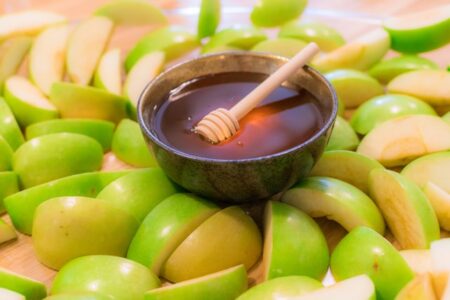
Apples and Honey
Last week, I gave a presentation on the many health benefits of Rosh Hashanah simanim, or symbolic foods. And while many traditional Jewish foods wouldn’t qualify as healthy (yeah, I’m talking about those delicious fried latkes, sufganiyot and kugel), the New Year simanim are brimming with so many important nutrients! While I can’t make any promises about the year ahead, I can promise you that these symbolic foods provide a whole lot of sweet health benefits.
Apples and Honey
Yup, these are the Rosh Hashanah go-tos, and for good reason. Adults and kids alike love apples dipped in honey, and it’s a tasty and fun way to usher in a sweet new year. Apples are symbolic of gan eden, or the Garden of Eden. And, they provide a lot of nutrients to boot. The peel is full of dietary fiber for a healthy heart and antioxidants for brain health. And, apples are a rich source of prebiotics–the fiber that feeds all those good gut microbes called probiotics that we want more of. (That’s right, probiotics need fuel to survive… not enough prebiotic fuel in your gut=reduced probiotics in your gut.) And before we chalk honey off as just a sweetener, let’s talk about its nutrient profile. Honey has long been touted for its antimicrobial and anti-inflammatory properties, and it’s rich in antioxidants like flavonoids and phenolic acid. It is still a sweetener and its calories can add up quickly, so enjoy in moderation. And, don’t give honey to children under 1 year old.
Pomegranates
This beautiful and mysterious fruit is one of the Seven Species of Israel. A pomegranate is one of the few fruits where we eat the seeds and discard the rest. A pomegranate at the Rosh Hashanah table symbolizes the desire for the new year to be as full of mitzvot (or good deeds) as a pomegranate is of seeds. Speaking of seeds, we tend to hear the words seeds and arils used interchangeably, but the aril is actually the whole little package–containing both the seed and the juice. And that aril is where you’ll find all of this fruit’s delicious nutrients, like antioxidants that help reduce blood pressure and arthritis symptoms, as well as boost brain and heart health. Try adding pomegranate arils to fruity rice, using as a salmon glaze or using the juice in a festive mocktail or cocktail.
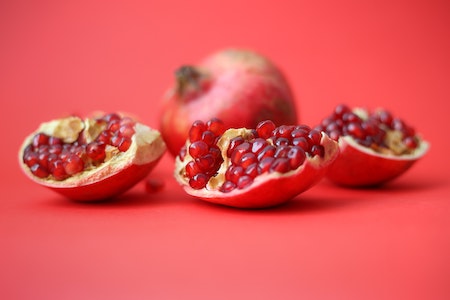
Carrots
Best known for their eye-boosting benefits, carrots are more than just a basic veggie… This veggie has some serious star powers. Yes, the antioxidants beta-carotene and lutein in carrots can help our kids see in the dark like Superman, but these same antioxidants also help support aging eyes by helping reduce the risk of macular degeneration and cataracts. Plus, the nutrients in carrots also help reduce the risk of heart disease and support a healthy immune system. This root vegetable at the Rosh Hashanah table symbolizes the desire that any negative decrees against us be nullified. And if you thought purple and yellow carrots are a new-age hybrid, think again. Originally from the Middle East, early carrots were purple and yellow. Orange carrots were developed in Central Europe in the late 15th/early 16th centuries. Try a festive carrot twist this holiday by roasting carrots with honey and cumin or boiling and pureeing with harissa for a spicy carrot mash.

Beets or Spinach
Beets (salek in Hebrew) and spinach (silka in Aramaic) are similar to the word “remove,” so these foods are eaten at Rosh Hashanah to symbolize the hope that our enemies will depart or “be removed” from us. Whether you choose to include beets or spinach at your festive meal, you can’t go wrong! Both of these veggies are rich in dietary fiber for digestive health, vitamin C for immune health and folate for heart health. Beets contain natural nitrates, which help lower blood pressure (and may boost athletic performance!), and spinach boasts vitamin K-1 for blood clotting and the antioxidant quercetin, which helps reduce inflammation. Whichever you choose, you’ll certainly reap lots of health benefits… and maybe even some New Year’s good luck. Serve roasted beets with honey and goat cheese, saute spinach with garlic or combine the two with oranges for a citrus spinach-beet salad.
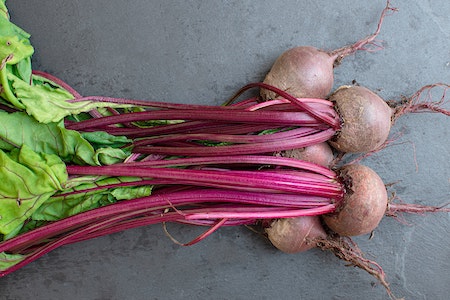
Leeks
This aromatic veggie belongs to the same family as garlic, shallots, scallions and chives. And, it symbolizes the hope that those who wish to hurt us will be cut off in the year ahead. Leeks contain vitamin C for immunity, vitamin K-1 for blood clotting, the sulfur compound called allicin to help lower cholesterol and antioxidants that help prevent type 2 diabetes, heart disease and certain types of cancer. Saute leeks in a little olive oil for frizzled leeks a healthier twist on fried onions or use in place of onions in matzoh ball soup.
Gourds
Gourds include winter squash and pumpkins… and you thought pumpkins were just for Halloween and Thanksgiving! The Hebrew word for gourd, k’ra, means to “to rip” or “to announce,” so including a pumpkin at your Rosh Hashanah table symbolizes the desire for evil decrees against us to be ripped up and that our merits will be announced. These beautiful fall and winter crops are loaded with essential nutrients, like dietary fiber for a healthy gut, immune-boosting vitamin C and beta-carotene, vitamin A for eye health, potassium for heart health and even anti-inflammatory properties. Add some gourds to your holiday meal by roasting butter nut squash with pecans and cinnamon or adding pumpkin puree to challah or bourekas.
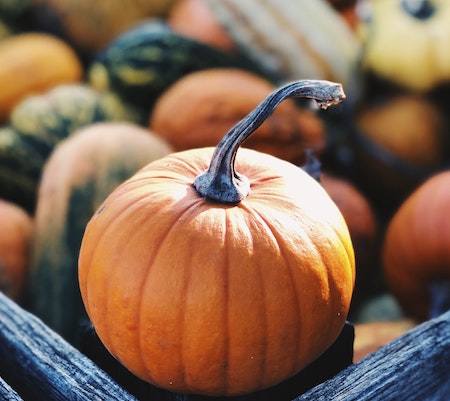
Dates
Like pomegranates, dates are one of the Seven Species of Israel. The Hebrew word for dates is “t’marim,” which is similar to “to end” and symbolizes that our enemies will be finished. While we mostly see dark dried dates here in the U.S., this little fruit can range from bright red to bright yellow when fresh or can be made into date honey. No matter how you serve this simanim, dates deliver a big sweet taste and a powerful nutrient punch. Dates contain iron (thanks to the drying process), carotenoids for improved heart and eye health, phenolic acid for brain health and antioxidants to help reduce risk of Alzheimer’s disease, type 2 diabetes and cancer. And because dates are so high in dietary fiber, they have a low GI or glycemic index Add dates to tzimmes or stew with meats or chicken. Or for a unique appetizer or dessert, stuff dates with tahini, nuts, peanut butter or a strong-tasting cheese, like goat or bleu cheese.
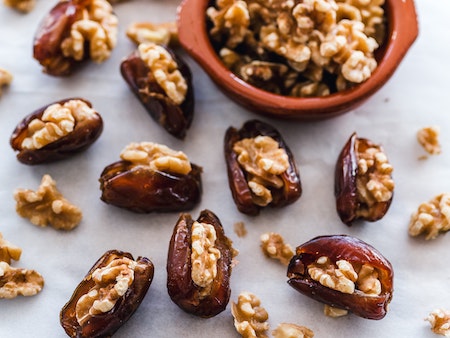
Fish and Fish head
A fish head at the Rosh Hashanah table symbolizes the head of a new year and moving forward. (If a fish head makes you squeamish, a head of garlic or cabbage work, too!) Or, just stick with serving fish at your holiday table, which symbolizes the idea of constantly moving (like a fish) and always being vigilant about doing good. Plus, fish is high in protein, selenium for brain health and anti-inflammatory omega-3s DHA and EPA, which help support a healthy brain, heart and eyes from before birth to older age. Plus, fatty fish, like salmon, are one of the few foods that naturally contain vitamin D, which helps promote bone health, optimal calcium absorption and a healthy immune system. Serve fish with a pomegranate glaze and arils or roast on a sheet pan with beets, butternut squash and leeks.
Shana tova!
PLEASE SHARE: What are your favorite simanim or symbolic holiday foods? Please share. I’d love to hear from you!


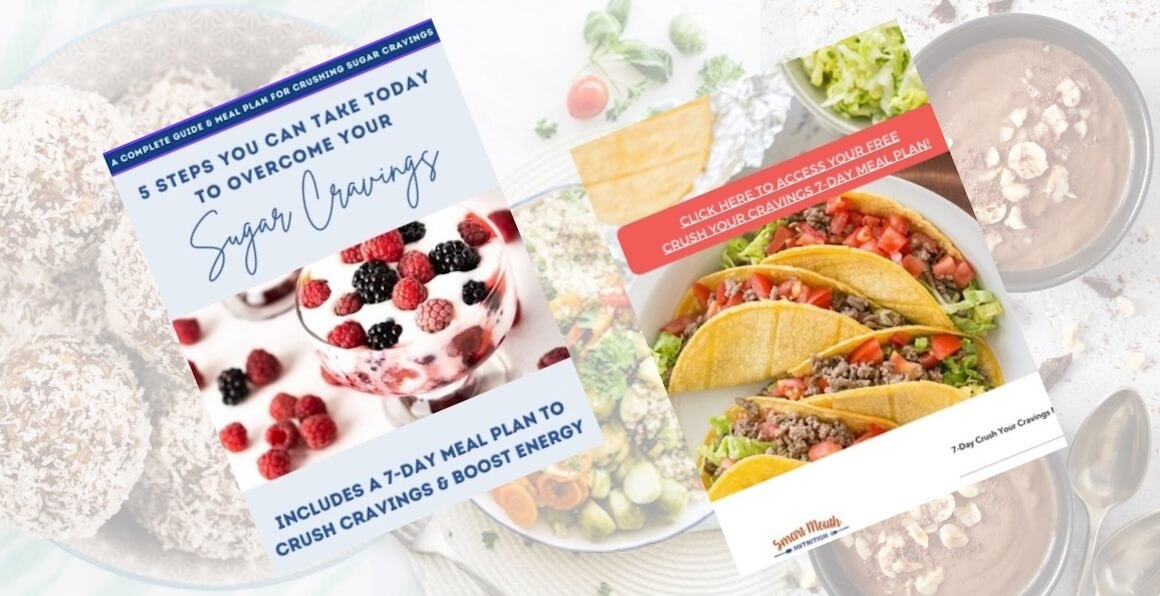

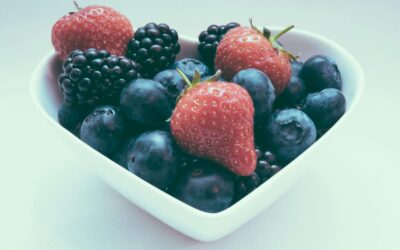

0 Comments